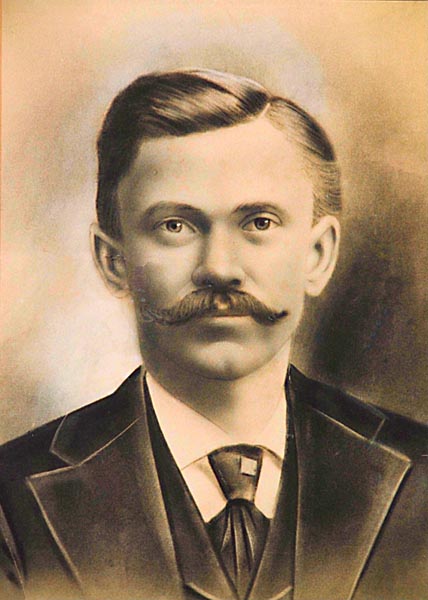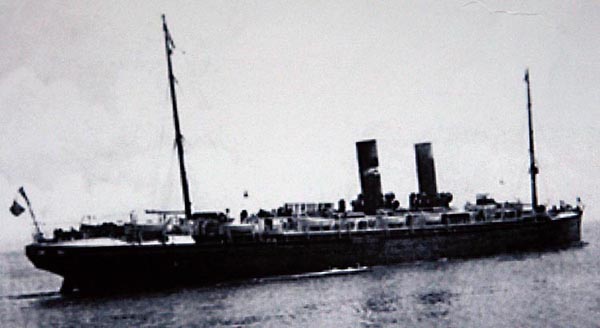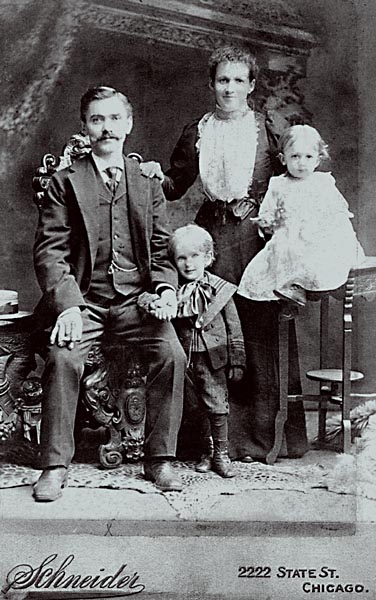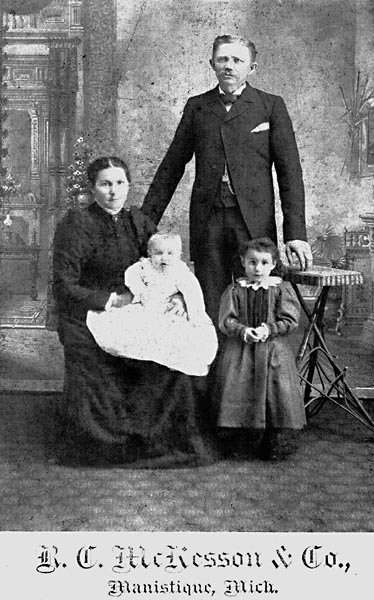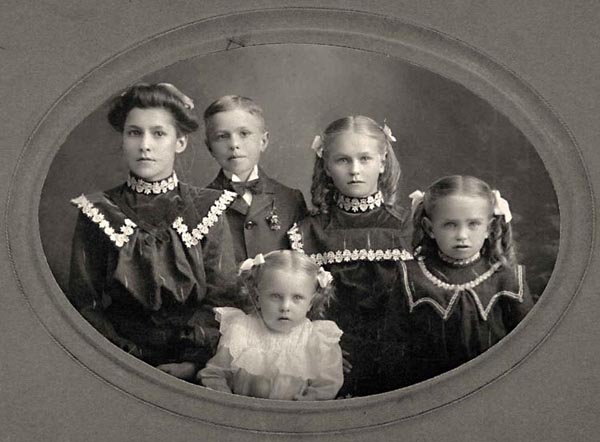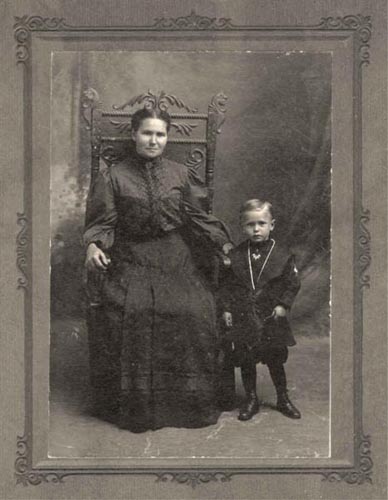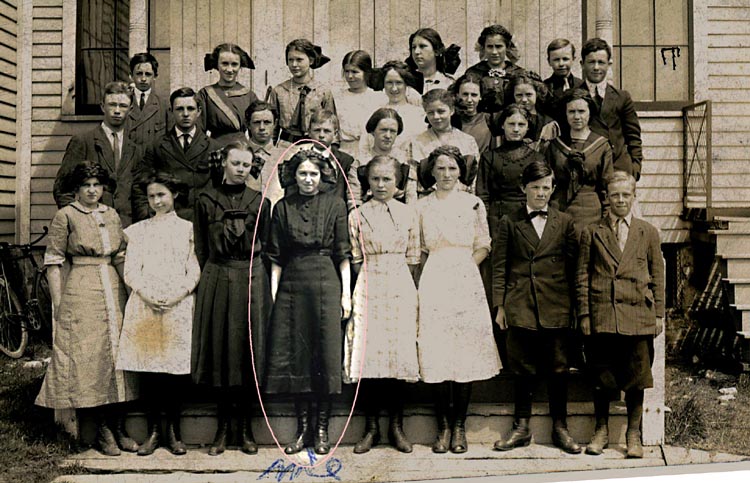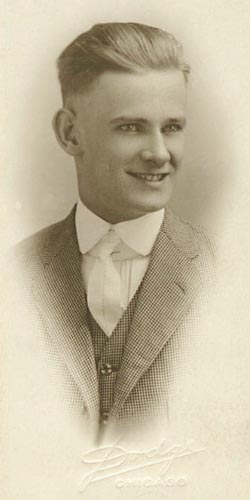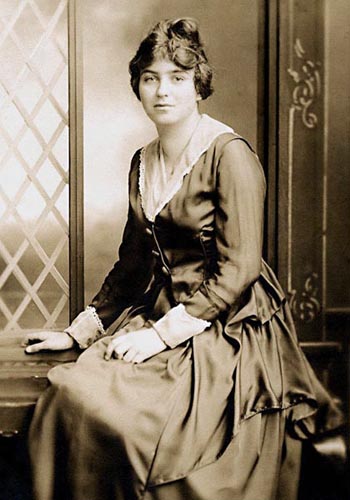Music • Photography • Writing
Louie
And Louise
Early Years
Teens
Twenties
Thirties
Forties
Fifties
Sixties
Seventies
Eighties
|
|
||
|
|
||||
|
The Early Years |
||||
|
The Poltevecques The story of Louie and
Louise begins in the area known as Alsace-Lorraine, between France
and Germany. The document pictured at left is interesting for several
reasons. Foremost, it is the birth certificate of Louis
Poltevèque, Sr., Louie’s father, born April 28, 1863 to Jean
Baptiste Poltevèque, 39, a day-worker, and his wife Marguarite
Stanisière, in the town of Lièpore in the district Sainte Marie-aux-mines. |
||||
|
Also, notice that the document is in both French and German. The rich, long-disputed mining district of Alsace-Lorraine was taken by the Germans in the Franco-Prussian War of 1870. This notarized copy, of which only a photocopy is known to exist, was obtained in 1896, around the time Louis, Sr., came to the U.S. and a year before his first son was born. |
||||
|
This charcoal drawing,
based on the only photograph we have of Louis,
Sr., was perhaps done over a copy of the photo, drawn perhaps
by Louise Poltevecque, who made
several other charcoal drawings. This photo of the original drawing
has been retouched; the original drawing, made on brittle cardboard
and many decades old now, has fallen to pieces. |
|
|||
|
|
|
He boarded this ship, the La Gascogne (pictured above), in La Havre, France, and arrived at Ellis Island near New York on March 9, 1896. Within about a year he was married to a young lady about his age, also from France, named Theresa Kaspermint. No one by that name was registered aboard La Gascogne, so it's unclear whether he brought her with him from France or met her in the United States. |
|
This distinguished dowager is Louise Michel Kaspermint, Theresa Kaspermint’s mother. The photo probably was taken around 1910. This photo, of the oldest person for whom we have a photograph, amounts to just about everything we know about the Kaspermint side of the family. The name Kaspermint sounds German, but her heritage is unknown, as is the location where the photograph was taken. |
|
|
|
|
||
|
“One treasured item I got from Grandma and Grandpa,” Tom said, “is this old glass. Grandma told me that Louie’s grandmother bought it at a fair in France, where she had her name engraved on it. In order to make the name more legible in the photograph, I filled it with sherry, something Louise Michel might have enjoyed.” |
||
|
|
This photograph, the
only one of Louis,
Sr., and of Louie
as a boy, was taken around 1900, when Louie was three and his brother
John
was still an infant wearing dresses, according to the style back
then. Taken at Chicago’s Schneider Studio and printed as a postcard,
a common practice, the clothing styles reflect the formality of
portraiture at that time; the family probably didn’t have such elegant,
stylish clothing to wear everyday. Note Louis, Sr.’s cigar, straw
boater, and the stick pin in the knot of his tie, as well as the
ornate furniture the studio provided, including a leopard-skin rug.
This is the earliest picture we have of Theresa
Kaspermint Poltevecque, as well as
the source of the charcoal drawing of Louis, Sr., shown above. |
||
|
The Dunkers We know little of
Louise’s heritage, other than
that both of her parents immigrated from Germany. (There can be
no greater evidence of the great American melting pot than that
the eldest son of Louis Poltevèque, who had left France to escape
the German draft, would marry a German girl.) Pictured here are
Louise’s parents, Herman Dunker
and Anna Schwesinger Dunker, with
their two oldest children, Bertha
and baby Herman, dressed,
as John Poltevecque was, in girl’s clothing. Anna’s grandfather
was said to be a Lutheran minister in Germany, and Louise and the
other children spoke German as their first language, though Louise
forgot it in later years. |
|
|
|
|
||
|
Herman Dunker, circled above, in a picture taken in approximately 1910 at age 60, obviously worked in the timber industry, then as now a big business in the heavily wooded Upper Peninsula of Michigan, where Manistique is located. Herman is sitting on a railroad flat-bed car loaded with the left-over bark slices from a sawmill, destined probably for a pulp factory to make cardboard. Note the other rough-looking characters in the picture. Herman died in 1922. |
||
|
|
This photo of Anna Schwesinger Dunker (1868-1942) wearing a high-collared, frilly dress, was a very small, very faint image. In addition to an increase in contrast, her nose, completely missing in the original, has been digitally (and probably inaccurately) reconstructed. |
||
|
|
|
Herman and Anna Dunker
had six children, the first five pictured above left to right with
the youngest in front: Bertha,
Herman Jr., Alvina,
Louise, and Emma.
Herman Jr. (1895-1906) died as a child. The other children went on to
marry and most had children of their own. Bertha (1891-1944) married
Frank Kandlick and had four children. Alvina (1893-1976) married
Harry Schroeder and had at least one child, Harry Warren. Emma,
born in 1901, married Harry Londahl and had two children, Burt and
Buddy. |
|
Anna later decided to have a portrait done with her youngest, Bill (1905-1978), unborn at the time of the other photo. Bill later married a woman named Lorraine; they had no children. |
|
|
|
|
|
Louise attended school in Manistique, where this class picture was taken. The school must have been more than a simple, one-room affair, judging from the size of Louise’s class. She and most of the other girls wear a large satin bow in their hair. Louise, like many other young women of the day, grew restless with small town life and decided to move to Chicago. There she attended business college and then worked for some time as a secretary. |
|
|
|
|||
|
After she had spent
some time living and working in Chicago, Louise
attended a sixteenth birthday party for her friend Lillian, when
Louise was 17. |
||||



